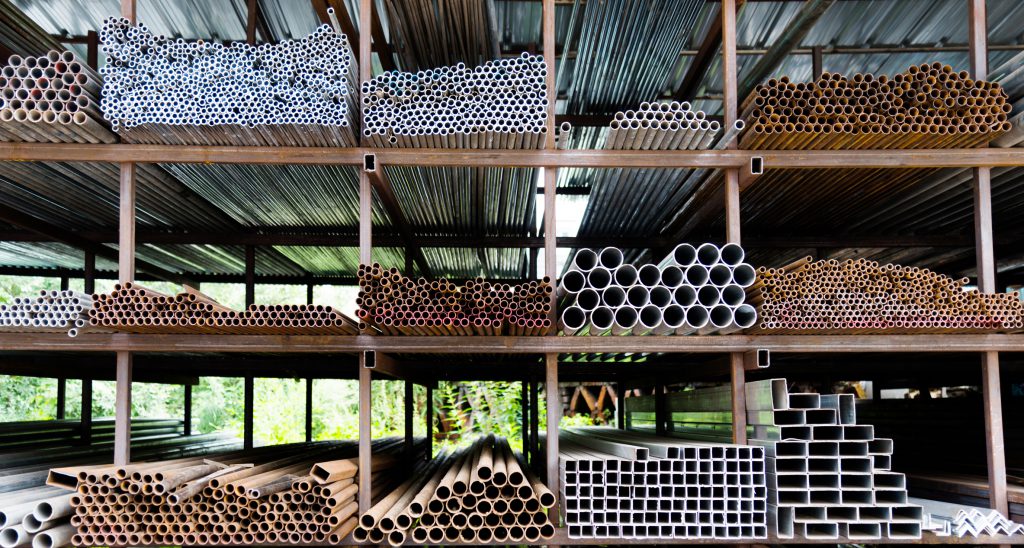
Public health is obviously the top priority. But the virus could cause market problems, too.
It’s been nearly two months since the Coronavirus first took hold in China, and unfortunately things likely are going to get worse before they get better.
Stopping the spread of the disease in order to save lives is the top priority right now – and let’s be clear, that should be the top priority. Public health must be paramount.
But there are other unexpected ways that the Coronavirus is having an impact around the world, things that are expected to impact our lives in both direct and indirect ways.
Last week, we wrote about how global dependence on pharmaceutical manufacturing in China might negatively impact the supply of medicine around the world (including in the United States). There’s also been quite a lot written about how the virus will effect global supply chains of everything else that’s Made in China. The tech industry is particularly worried.
And now there’s new concern about steel.
Let’s take a few steps back.
China’s state-owned, government-subsidized steel companies have been making far too much steel for years now. Since 2000, 75 percent of new steel stock has come from China. But despite years of breakneck economic expansion, China can’t use all that steel for its own needs. So it dumps it onto the global market at rock-bottom prices, far below fair market value.
As a result, steel imports in the U.S. surged over the past decade, leading to tens of thousands of U.S. layoffs and dozens of plant closures. China faced international pressure to stop making so much steel and repeatedly pledged to do so, but failed to keep those promises.
In response, the Obama administration issued tariffs on specific steel products, but it wasn’t enough. By the time President Trump came into office, it was clear that wider action was needed.
Trump issued a 25 percent across-the-board tariff on steel imports in April 2018 under “Section 232” authority. Although the tariff didn’t solve the global steel crisis – only China cutting its steel capacity will do that – it did manage to stop the bleeding for American steel companies and workers. Idled facilities came back online, and many steelworkers were able to head back to work.
But again, China is still making too much steel. Now the Coronavirus could make things worse.
The mills are still churning.
If you’ve been following China’s response to the Coronavirus, you know that Chinese authorities have either put on hold or outright canceled construction projects around the country in order to divert attention and resources to containing the virus.
Meanwhile, steel plants in China have not slowed their production capacity enough in response, which is leading to an even bigger glut of steel. China now has a record stockpile of reinforced bar, or rebar, which is used in construction projects.
Bloomberg reports:
“China’s mammoth steel sector — which accounts for more than half of global production — is in turmoil because of the outbreak, hit by transport curbs, worker shortages and a slide in demand. Given the challenges, mills have been reining in ouput, although there are limits to how much they can cut without shutting down furnaces, a complicated and costly move. Signs of surging steel inventories may add to downward pressure on iron ore prices.”
What will all of this mean for the American steel industry?
Although it isn’t at the crisis point of a few years ago, things still aren’t exactly great for the steel industry, given the fact that the global supply glut continues and there’s been weak demand for steel products overall. And past global crises have not been kind to steel.
The steel tariffs, which are still in place, will ensure that China cannot dump all that new extra steel directly into the American market. But it’s still likely all of that rebar and whatever else China overproduces will make it into the global market, which will drive down prices and continue to fuel the overall crisis.
So where do we go from here?
Well, the United States and its global allies must continue to pressure China to reduce its industrial capacity and finally put an end to the steel crisis. That’s the only way there will ever be any real resolution.
But in the meantime, there is something else that U.S. policymakers can do to boost American steelworkers and companies (and thankfully it doesn’t require any action from China at all).
It’s time for #InfrastructureWeek!
O.K., this is a very serious and somber blog, and not a time for jokes. But we aren’t joking!
It’s past time to rebuild and repair America’s bridges, transit systems, pipelines, roads, airports, railways, ports, water systems, and more. A robust infrastructure package not only will create demand for the steel industry, it also will create millions of jobs across the wider economy. This is especially true if Buy America preferences are applied, ensuring that work happens locally.
It’s essential that the global community come together to address the public health threat of Coronavirus, and that's priority No. 1. But there also will likely be indirect effects from the virus – including in important manufacturing industries like steel – and policymakers should do all they can to mitigate the potential damage.
